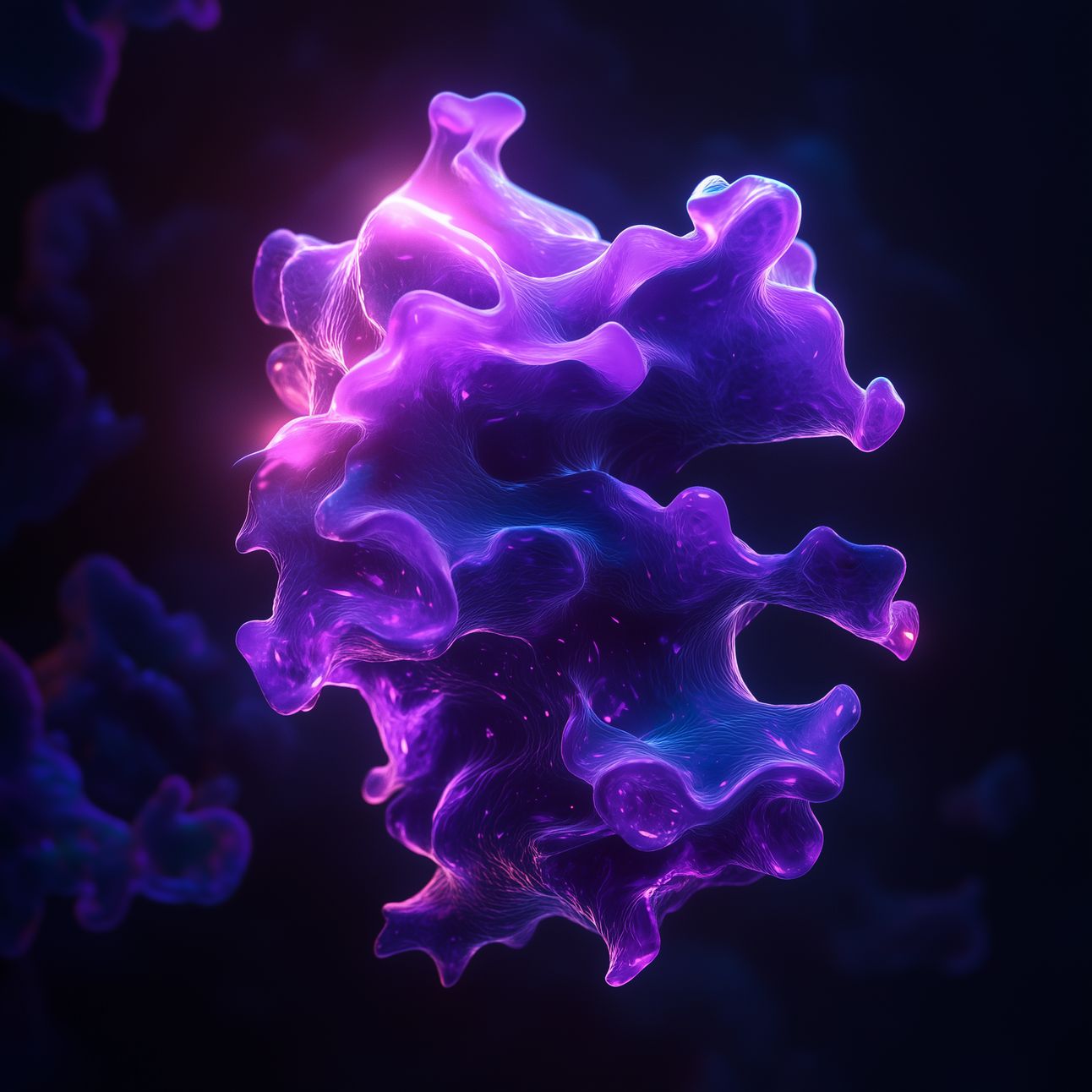- The Daily Qubit
- Posts
- The Daily Qubit
The Daily Qubit
QNN and QVSM improve diagnostic accuracy for cardiovascular disease, QLSTM to improve stock price prediction through financial time-series predictions, and a turn-based quantum encoding algorithm assists in simulating protein folding.

Welcome to The Daily Qubit!
Get the latest in top quantum news and research Monday through Friday, summarized for quick reading so you stay informed without missing a qubit.
Have questions, feedback, or ideas? Fill out the survey at the end of the issue or email me directly at [email protected].
And remember—friends don’t let friends miss out on the quantum era. If you enjoy The Daily Qubit, pass it along to others who’d appreciate it too.
Happy reading and onward!
Cierra
Today’s issue includes:
A quantum machine learning framework is applied within a cloud computing environment to classify heart disease.
A hybrid quantum-classical long short-term model is used to improve stock price prediction, integrating quantum variational circuits with classical LSTM.
A quantum computing solution to predict protein structures uses a turn-based encoding model on a gate-based quantum computer to simulate protein folding.
QUANTUM APPLICATION HEADLINES
At a recent workshop on the intersection between quantum and AI, IBM, NVIDIA, and Microsoft led presentations that centered around the profound impact quantum is expected to have on molecular simulation, drug discovery, and our understanding of complex protein folding. But the potential of quantum extends into other aspects of healthcare. Quantum machine learning for the classification of highly correlated but often complex or sparse (or a combination of the two) data is a use case not to be missed.

Image: by Midjourney for The Daily Qubit
APPLICATION: Scientists from the University of Anbar present a quantum machine learning framework applied within a cloud computing environment to classify heart disease. The overall goal of the framework is to improve diagnostic accuracy for cardiovascular disease through quantum-enhanced models, specifically the quantum neural network, quantum support vector machine, and an ensemble bagging-QSVM model.
SIGNIFICANCE: As noted in the paper, heart disease remains a leading cause of mortality globally, and early diagnosis is of the utmost importance for effective treatment. Traditional machine learning models have limitations in managing complex, high-dimensional healthcare data. By implementing QML algorithms, the authors hope to achieve higher precision in disease classification, improving early detection rates, and potentially reducing heart disease-related mortality. The cloud-based QML framework addresses the computational demands of processing large datasets, potentially enabling real-time or near-real-time health monitoring.
HOW: The framework operates by preprocessing the Cleveland HD dataset with feature selection and dimensionality reduction techniques (principal component analysis and recursive feature elimination), followed by normalization. Two QML algorithms, QNN and QSVM, were implemented and tested against traditional machine learning classifiers (SVM and ANN). The ensemble bagging-QSVM model was introduced to improve performance further by aggregating multiple QSVMs trained on different data subsets, ultimately achieving a 100% accuracy score.
BY THE NUMBERS:
85% accuracy – Achieved by QSVM, outperforming QNN’s 77% accuracy in the study.
100% accuracy – Performance of the ensemble bagging-QSVM model, indicating the effectiveness of the bagging method.
1,190 records – Total number of patient records used, combining datasets from Cleveland, Hungarian, Switzerland, Long Beach VA, and Statlog, with features covering patient demographics and health indicators.
4 algorithms – QNN, QSVM, and their classical counterparts (SVM, ANN) were tested to assess QML’s efficacy in heart disease prediction.
Predicting stock prices is a notoriously complex task, influenced by countless market variables and unpredictable fluctuations. Traditional machine learning models they often struggle with the computational demands required to capture the high-dimensional patterns of financial data. Long short-term memory networks are specialized for analyzing sequential data, making them well-suited for time-series predictions like stock prices, where past trends influence future values.

Image: by Midjourney for The Daily Qubit
APPLICATION: Researchers from Pukyong National University and Chungbuk National University introduce a hybrid quantum-classical long short-term model (QLSTM) to improve stock price prediction. Integrating quantum variational circuits with classical LSTM, the model improves data processing in complex financial time-series predictions.
SIGNIFICANCE: Stock price prediction is notoriously difficult due to the many different volatile market influences. Traditional machine learning models, while effective, can be computationally intense, limiting their efficiency. This QLSTM model demonstrates how quantum computing's unique features may lead to more accurate and faster predictions, especially as quantum hardware matures. Additionally, QLSTM may be used in a similar way in other time-sensitive fields, such as healthcare and energy forecasting.
HOW: The QLSTM framework combines classical LSTM’s sequence processing with quantum variational circuits to encode and manipulate stock price data within a quantum state space. IBM’s quantum simulators and real hardware were used to test the model, and the researchers noted a performance boost over classical LSTM.
BY THE NUMBERS:
1-year dataset – Apple stock price data from January 2022 to January 2023 used for testing the QLSTM model.
0.0602 RMSE – QLSTM achieved a Root Mean Square Error of 0.0602 in noiseless conditions, outperforming classical LSTM which had an RMSE of 0.0693.
97.36% accuracy – QLSTM achieved nearly 98% accuracy in noiseless simulations, compared to 88% for classical LSTM.
3 quantum environments – QLSTM was tested across noiseless simulators, noisy simulators, and IBM’s quantum hardware, providing insights into the role of quantum noise in model performance.
Predicting protein folding is one of biology’s most intricate puzzles, largely due to the immense degrees of freedom involved in each fold and twist of a protein chain. Degrees of freedom determine how flexibly a protein can fold, which is important for replicating the natural complexity of biological structures. In particular, hydrophobic collapse—the process that compacts hydrophobic residues toward the protein’s core—is a phenomenon that dictates a protein's stability and function. By simulating these complex dynamics using quantum mechanics, researchers can develop accurate protein models, potentially leading to advances in disease treatment and drug discovery.

Image: by Midjourney for The Daily Qubit
APPLICATION: Scientists from the Indian Institute of Technology Madras present a quantum computing solution to predict protein structures, using a turn-based encoding model on a gate-based quantum computer to simulate protein folding.
SIGNIFICANCE: Accurate protein structure prediction is relevant for understanding diseases such as Alzheimer's, Parkinson's, and cystic fibrosis, where misfolded proteins disrupt normal cellular functions. Current AI and classical methods struggle with proteins that have low sequence similarity. Through quantum mechanics, this study introduces a scalable approach to model protein folding, which could lead to further developments in drug discovery and treatment strategies for diseases linked to protein misfolding.
HOW: The team developed a turn-based encoding algorithm using the HP (hydrophobic-polar) model. They ran the algorithm on IBM quantum hardware, using up to 114 qubits, to simulate hydrophobic collapse — the phenomenon that brings hydrophobic residues to the protein's core. This quantum approach allows for 26 degrees of freedom in a 3D cubic lattice, allowing diagonal movements and avoiding issues with classical models.
BY THE NUMBERS:
114 qubits – Maximum qubits used on IBM hardware to simulate up to 20-bead protein sequences.
26 degrees of freedom – The turn-based encoding allows for a total of 26 degrees of freedom that can be generated using six qubits, enabling complex folding patterns.
Hire Ava, the Industry-Leading AI BDR
Ava automates your entire outbound demand generation so you can get leads delivered to your inbox on autopilot. She operates within the Artisan platform, which consolidates every tool you need for outbound:
300M+ High-Quality B2B Prospects
Automated Lead Enrichment With 10+ Data Sources Included
Full Email Deliverability Management
Personalization Waterfall using LinkedIn, Twitter, Web Scraping & More
RESEARCH HIGHLIGHTS
🔊 A University of Copenhagen team explores the challenge of maintaining quantum advantage in noisy environments, specifically when using a "faulty oracle" model, where the oracle has a probability of failure. The researchers demonstrate that by increasing query complexity, quantum algorithms can retain their speed advantage, even under this noise model, providing a way to use resilient quantum algorithms that maintain quantum speedups despite oracle imperfections.
🌐 Scientists from the Tokyo University of Science and others introduce a universal scaling hypothesis for quantum spatial search on complex networks, using path length as a key factor to reveal consistent behavior across network structures. The results suggest that this scaling could increase the efficiency of quantum algorithms in complex systems.
🔎 Researchers from the University of California and Creighton University explore a new approach to quantum search by using a many-body quantum system to achieve a constant-time solution. By using a Bose-Einstein condensate with nonlinear interactions, the study demonstrates that search problems can be solved faster than traditional quantum methods.
NEWS QUICK BYTES
❄️ Researchers at Berkeley Lab and UC Berkeley have achieved the first direct images of the Wigner molecular crystal, a newly discovered quantum phase of electron solids with potential for future quantum technologies. Using an innovative scanning tunneling microscope (STM) technique, the team successfully visualized this delicate structure in a twisted tungsten disulfide moiré superlattice. This, overcoming prior imaging challenges, could lead to deeper insights into electron behaviors and applications in quantum simulation.
💎 XeedQ has delivered its “Baby Diamond” 5-qubit quantum computer to Goethe University, enhancing quantum research and education on the historic Bockenheim Campus. The nitrogen-vacancy-based device operates at room temperature, making it energy-efficient and accessible, eliminating the need for cryogenic cooling. This partnership aligns with XeedQ's mission to provide accessible quantum technology.
💰️ Quantum Computing Inc. reported steady progress in Q3 2024, as well as highlighted by advances in its U.S.-based Thin Film Lithium Niobate (TFLN) chip foundry and ongoing collaborations with major research institutions. The company renewed its research partnership with Los Alamos National Laboratory and secured a new NASA contract to develop quantum remote sensing for climate monitoring, showcasing the versatility of its Dirac-3 platform. Financially, QCi's revenues increased to $101,000, while its cost management led to reduced operating expenses.
QUANTUM MEDIA
LISTEN
—weekend ambience—
WATCH
Weekend documentary watch:
THAT’S A WRAP.
How many qubits was today's newsletter? |


